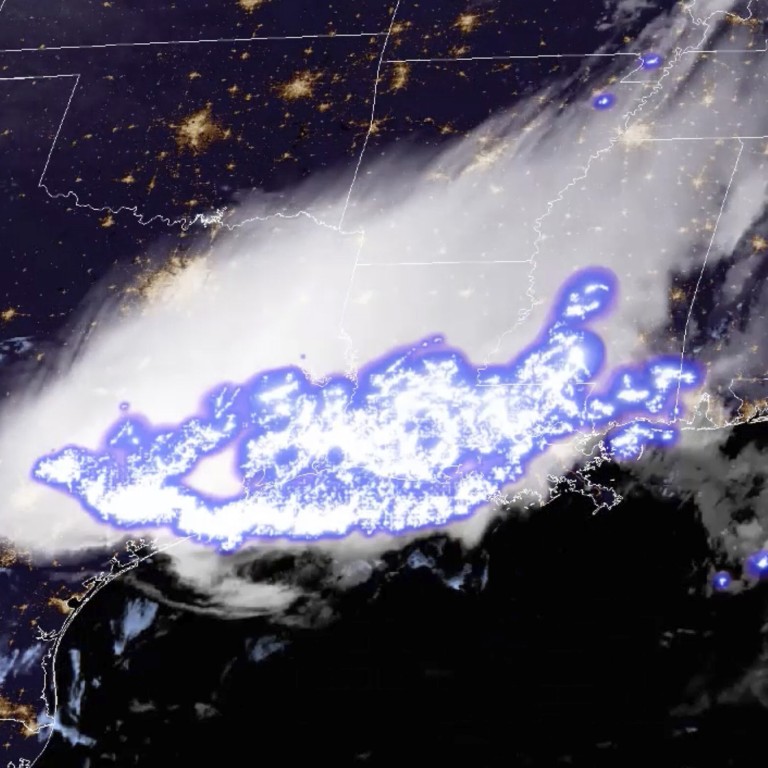
World record 770km lightning bolt lights up three US states
- The ‘megaflash’ covered the distance between Texas and Mississippi in seconds – a trip that would have taken hours in a plane
- Another bolt above Uruguay and Argentina set a record as the longest-lasting at 17.1 seconds
A single lightning bolt that leapt across three US states has been identified as the longest ever, the UN weather agency said on Tuesday.
Dubbed a megaflash, the rare low-rate horizontal discharge covered 768km (477 miles) between clouds in Texas and Mississippi in April 2020.
It was detected by scientists using satellite technology and its distance – beating the previous record by 60km – confirmed by a World Meteorological Organisation committee.
“That trip by [plane] would take a couple of hours and in this case the distance was covered in a matter of seconds,” WMO spokeswoman Clare Nullis said.
Another megaflash that occurred above Uruguay and Argentina in June 2020 also set a record, as the longest-lasting at 17.1 seconds, the WMO said.
While these two newly catalogued megaflashes never touched the ground, they serve as a reminder of the dangers of a weather phenomenon that kill hundreds of people a year.
“These are extraordinary records from single lightning-flash events,” said Professor Randall Cerveny of Weather and Climate Extremes for the WMO, which certified the records.
“Environmental extremes are living measurements of the power of nature, as well as scientific progress in being able to make such assessments,” Cerveny said.
Lightning ignited ‘eye of fire’ in Gulf of Mexico
“It is likely that even greater extremes still exist and that we will be able to observe them as lightning detection technology improves.”
“Lightning is a major hazard that claims many lives every year,” WMO Secretary-General Petteri Taalas said.
“The findings highlight important public lightning safety concerns for electrified clouds where flashes can travel extremely large distances.”
“We reiterate our message: when thunder roars, when you see lightning – go indoors. Don’t seek shelter in a beach hut, don’t stand under a tree,” Nullis said.
Additional reporting by Tribune News Service

